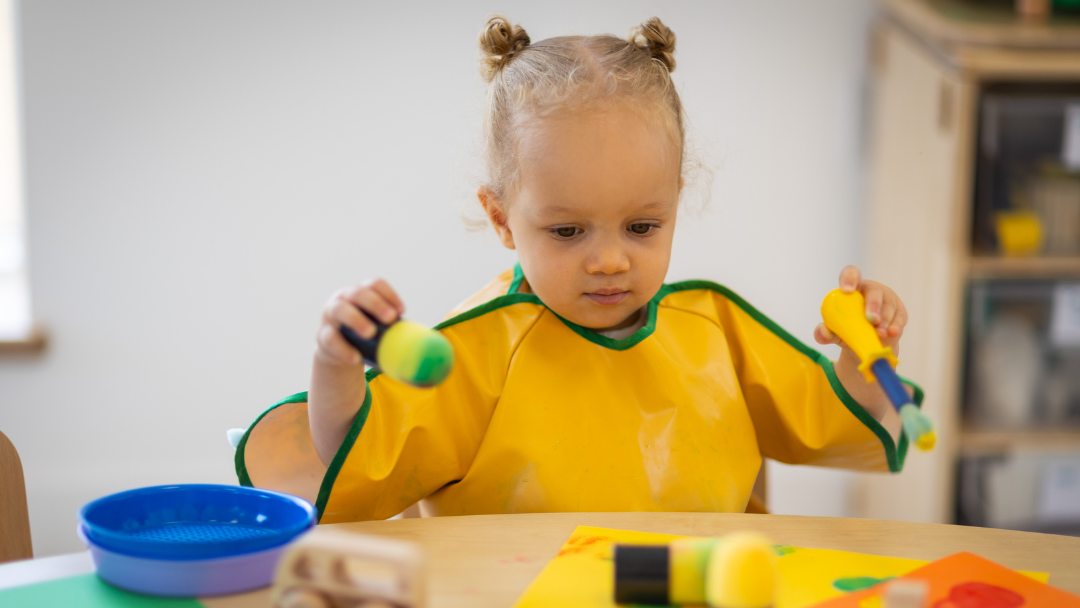In the first few months, your baby slept intermittently between feeds, but now that your child is a toddler, you've probably noticed some major changes in sleep patterns. Bedtimes may also be more of a struggle these days if your toddler refuses to sleep when it's time for lights out.
Here are a few tips to establish a healthy sleep routine to help you and your toddler get a well-rested night's sleep.
1. Establish a Regular Sleep Pattern
Regular hours of sleep are crucial. They help your child understand when it is bedtime and time for sleep. Also, your child will have a better night's sleep. Bedtime shouldn't vary by more than an hour, whether your child has an early start the next morning or not. The same goes for morning wake-up times.
2. Maintain a Consistent Bedtime Routine
Having the same routine before bed each night is beneficial. This helps your child prepare for sleep. Quiet activities such as reading a book, being read to, or having a bath or shower work well. Avoid more active games, playing outside, watching TV, or using the internet in the half-hour before bed.
3. Ensure the Bedroom is Comfortable
The bedroom should be quiet, comfortable, and dark. Some children like a night light, and that's fine. Make sure your child sees the bedroom as a good place to be by not using it as a place for punishment. A comfortable bedroom temperature should be between 16-18 degrees Celsius. Extreme temperatures can cause restlessness.

4. Bed is for Sleeping, Not Entertainment
Keep TV, computers, mobile phones, and other distractions out of the bedroom. Watching a screen to fall asleep can become a bad habit. It's also better if you can monitor what your child is watching. According to a new study conducted at Birkbeck University and King’s College, University of London, excessive screen time can impact overall sleep duration negatively.
5. Watch Food Intake Before Bed
A high intake of sugary or fatty foods has been linked with more restless sleep. Avoid sugary or high-fat snacks before bedtime, as well as large meals. A small, healthy, savory snack before bed is acceptable.
7. Be Mindful of Daytime Naps
While it's normal for young children to nap during the day, as your child gets older, they will need less sleep. The number and length of naps depend on your child. If your child naps after 4 pm (except for the very young), it can be harder for them to fall asleep at night.
8. Incorporate Exercise and Time Outside
Daily exercise is crucial for healthy living and promotes good sleep. Time spent in bright daylight achieves the same. Outdoor exercise combines both these elements. However, it's best to avoid vigorous activity in the hour before sleep.
By implementing a solid sleep routine, you'll not only benefit your child but also feel more refreshed and ready to take on the day.
In embracing a steadfast sleep routine for your toddler, you are not only nurturing their well-being but also cultivating a sense of stability and tranquility within your household. The journey to a good night's sleep involves consistent patterns, a soothing bedtime routine, and a conducive sleep environment. By prioritizing these elements and steering clear of disruptive habits, you're not just ensuring your child's restfulness but also fostering your own rejuvenation. As you embark on this voyage towards healthier sleep habits, may the nights be filled with sweet dreams, and the days unfold with vitality and joy for both you and your little one. Sweet dreams and a well-rested tomorrow await!

FAQ
Subscribe to our newsletter
Stay up to date with Fennies news





.png)




.png)